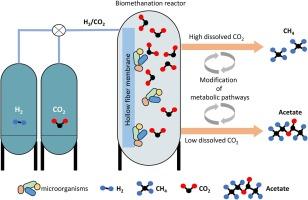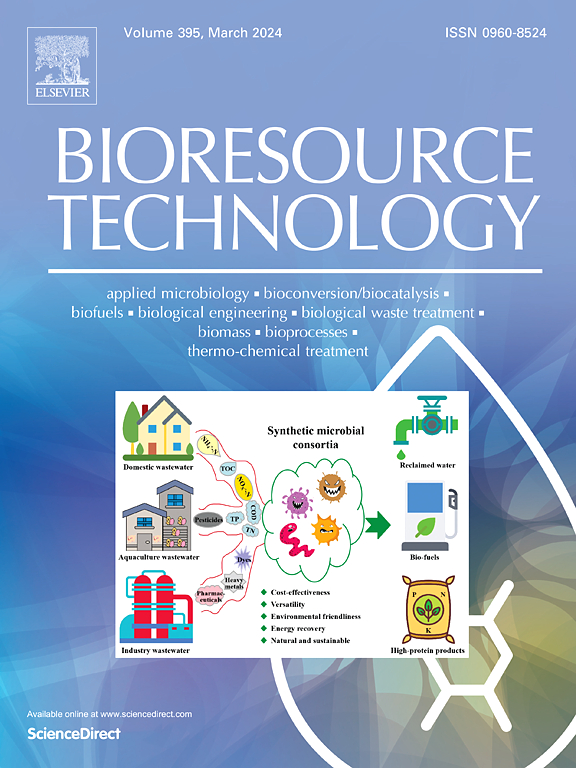利用溶解的二氧化碳控制甲烷化反应器中甲烷和醋酸盐的产生。
IF 9.7
1区 环境科学与生态学
Q1 AGRICULTURAL ENGINEERING
引用次数: 0
摘要
本研究利用提供 H2/CO2 的甲烷化膜生物反应器研究了溶解二氧化碳对代谢途径选择的影响。采用不同的 H2/CO2 比率(3.3、3.8、4.0、4.5 和 5.0(v/v))来调节培养基中的溶解 CO2 水平。研究结果表明,溶解的 CO2 浓度与 CH4(正)和乙酸盐(负)的产生之间存在相关性。具体来说,当二氧化碳溶解浓度高于 2.0 ± 0.2 mmol/L 时,有利于 CH4 的产生。与此相反,在二氧化碳溶解浓度较低时,乙酸的产生更有利,在二氧化碳溶解浓度为 0.9 mmol/L 时,乙酸的最大浓度为 1.9 g/L。这项研究表明,改变甲烷化生物反应器中的二氧化碳溶解水平可以为选择代谢途径和微生物群落提供一种策略,从而为优化二氧化碳转化为 CH4 和醋酸盐等高价值产品提供了一个很好的机会。本文章由计算机程序翻译,如有差异,请以英文原文为准。

Utilization of dissolved CO2 to control methane and acetate production in methanation reactor
This study investigated the influence of dissolved CO2 on the selection of metabolic pathway using a methanation membrane bioreactor supplied with H2/CO2. Various ratios of H2/CO2 were applied (3.3, 3.8, 4.0, 4.5, and 5.0 (v/v)) to manipulate dissolved CO2 levels in the medium. The findings revealed a correlation between the concentration of dissolved CO2 and the production of CH4 (positive) and acetate (negative). Specifically, at a dissolved concentration of CO2 above 2.0 ± 0.2 mmol/L, production of CH4 was favored. At the opposite, acetate production was favored at lower dissolved CO2 concentrations, with a maximum concentration of 1.9 g/L observed at 0.9 mmol/L of dissolved CO2. This study demonstrates that the modification of dissolved CO2 levels in a methanation bioreactor can provide a strategy for the selection of metabolic pathways and microbial communities, thereby offering a promising opportunity for optimizing the conversion of CO2 into high-value products such as CH4 and acetate.
求助全文
通过发布文献求助,成功后即可免费获取论文全文。
去求助
来源期刊

Bioresource Technology
工程技术-能源与燃料
CiteScore
20.80
自引率
19.30%
发文量
2013
审稿时长
12 days
期刊介绍:
Bioresource Technology publishes original articles, review articles, case studies, and short communications covering the fundamentals, applications, and management of bioresource technology. The journal seeks to advance and disseminate knowledge across various areas related to biomass, biological waste treatment, bioenergy, biotransformations, bioresource systems analysis, and associated conversion or production technologies.
Topics include:
• Biofuels: liquid and gaseous biofuels production, modeling and economics
• Bioprocesses and bioproducts: biocatalysis and fermentations
• Biomass and feedstocks utilization: bioconversion of agro-industrial residues
• Environmental protection: biological waste treatment
• Thermochemical conversion of biomass: combustion, pyrolysis, gasification, catalysis.
 求助内容:
求助内容: 应助结果提醒方式:
应助结果提醒方式:


